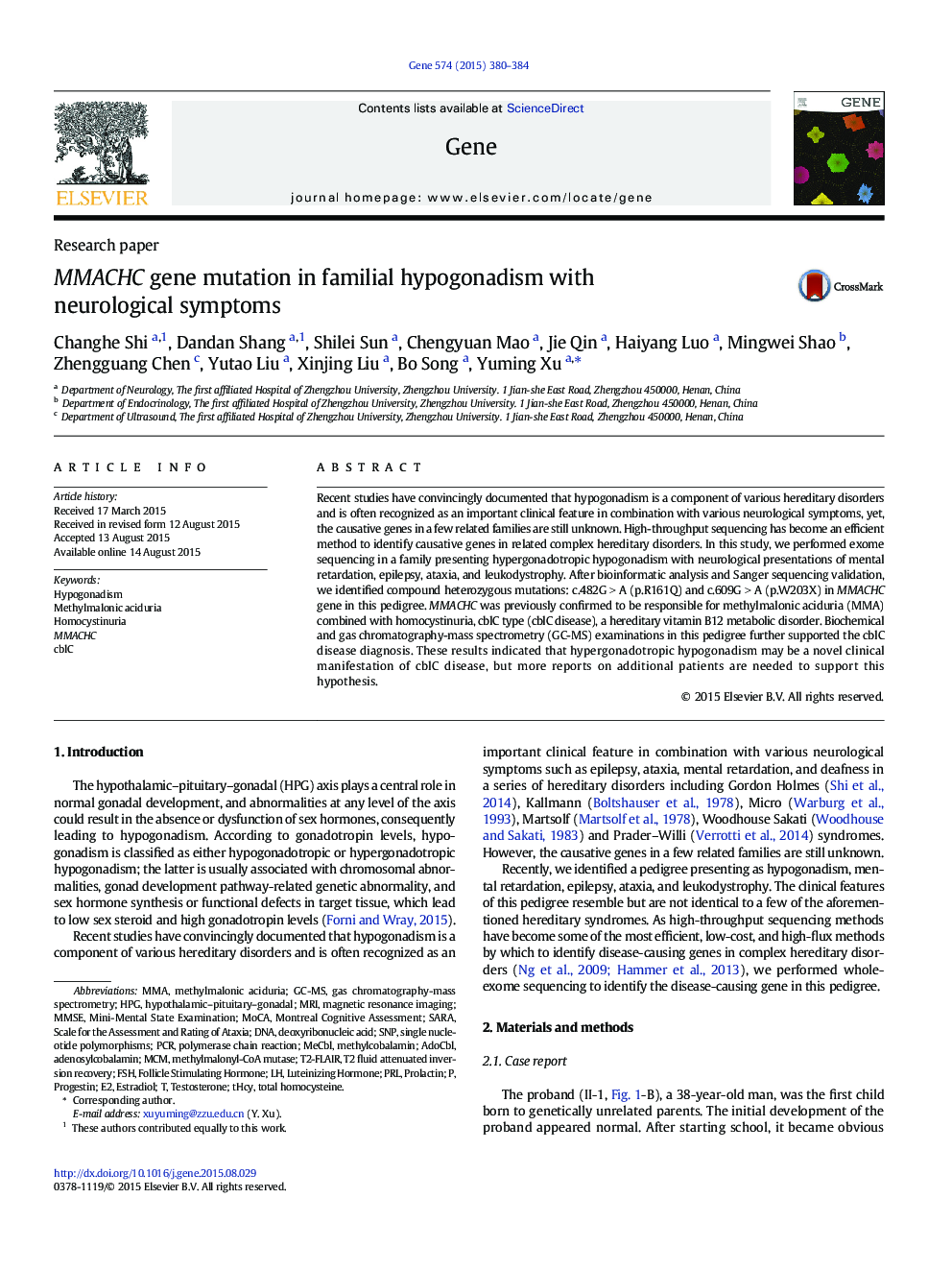| Article ID | Journal | Published Year | Pages | File Type |
|---|---|---|---|---|
| 2815368 | Gene | 2015 | 5 Pages |
•Hypogonadism may be a novel clinical manifestation of cblC disease.•Gonadal function should be monitored in this disorder.•Early supplementation of vitamin B12 may prevent gonadal damage in cblC disease.
Recent studies have convincingly documented that hypogonadism is a component of various hereditary disorders and is often recognized as an important clinical feature in combination with various neurological symptoms, yet, the causative genes in a few related families are still unknown. High-throughput sequencing has become an efficient method to identify causative genes in related complex hereditary disorders. In this study, we performed exome sequencing in a family presenting hypergonadotropic hypogonadism with neurological presentations of mental retardation, epilepsy, ataxia, and leukodystrophy. After bioinformatic analysis and Sanger sequencing validation, we identified compound heterozygous mutations: c.482G > A (p.R161Q) and c.609G > A (p.W203X) in MMACHC gene in this pedigree. MMACHC was previously confirmed to be responsible for methylmalonic aciduria (MMA) combined with homocystinuria, cblC type (cblC disease), a hereditary vitamin B12 metabolic disorder. Biochemical and gas chromatography-mass spectrometry (GC-MS) examinations in this pedigree further supported the cblC disease diagnosis. These results indicated that hypergonadotropic hypogonadism may be a novel clinical manifestation of cblC disease, but more reports on additional patients are needed to support this hypothesis.
